#Okamoto Kanoko
Text

recatado de suyo
el gusano de seda
no llora ni canta
mas emboza su corazón
tejiendo una crisálida
つつましく泣かぬ歌はぬ蚕がこころかなしくこめて購あまれけん
hace diez años
era yo una demente
la vista fija en
cerezos como fuego
cerezos como tinta
狂人のわれが見にける十年まへの真赤きさくら真黒きさくら
habiendo dejado
toda la sangre correr
en el fregadero
un pez muerto luce
en la quietud de la tarde
流るる血ながしつくして厨辺に死魚ひかるなり昼の静かさ
Okamoto Kanoko
#Okamoto Kanoko#literatura japonesa#poesía contemporánea#tanka#recato#demencia#cerezos#extrañeza#quietud#traducción©ochoislas#岡本かの子
10 notes
·
View notes
Text
"
Bilinçli olarak aradığın şeyi aradığın yoldan elde edemezken, o şeyi, düşünmeyi bırakıp terk ettiğin geçmişinden ya da ummadığın bir ara yoldan, havadan süzülürcesine sunan hayat ne garip.
Kanoko Okamoto, Japon Balığı Karmaşası
6 notes
·
View notes
Text

"Yet, we are attracted to each other like plus and minus, in that for you the void is something you have gotten from your learning, while for me the void is some dry, hard shell which I carry on my back because of the great pulls of my ego and passions. I had faint hints of a potent force within you. It is difficult for me to explain further in a letter, but if I force myself to put this down in words, your emptiness is—that bright and shining emptiness—that emptiness which makes you certain of the consciousness of your existence—that void which is inspired by ecstasy—in nature, by a keen awareness of a flower's stem in the slightest breeze—in the human world, the mysteriously graceful and endless void which brims over when one is in a kind of self-induced trance..."
A Mother's Love, Kanoko Okamoto, tr. by Phyllis Birnbaum
0 notes
Text
A Flower Blooms
A flower blooms
Showing the natural color
it was born with
while I have never known
in what color I am to bloom.
3 notes
·
View notes
Text

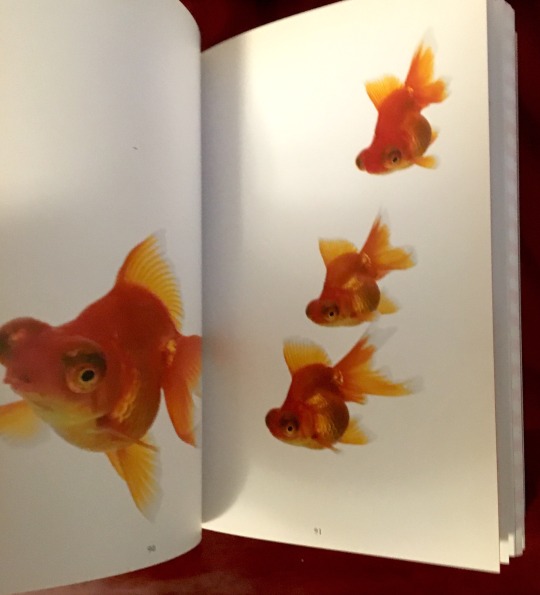
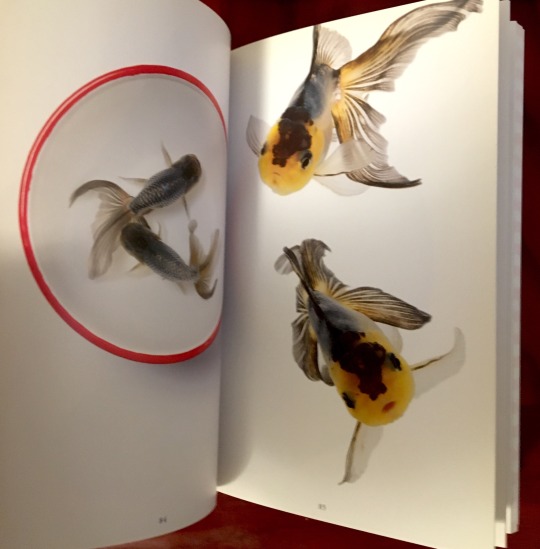
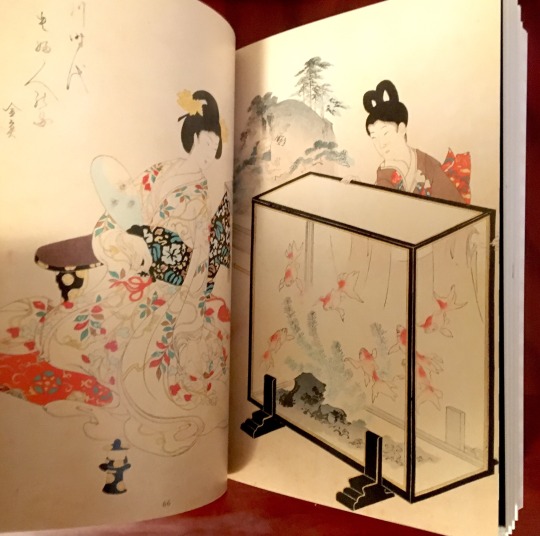

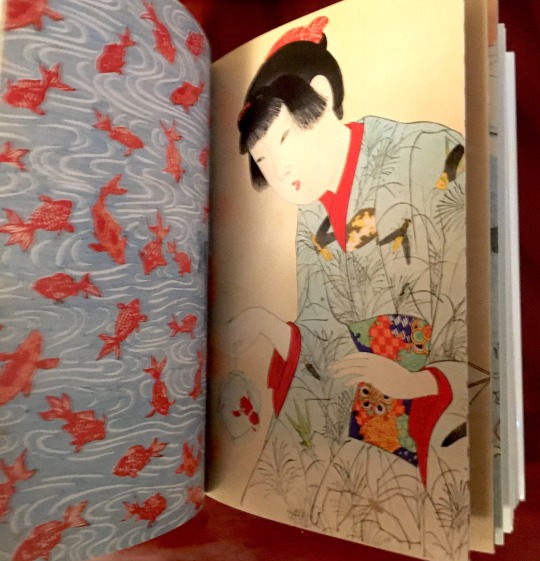
Book 164
Kingyo: The Artistry of Japanese Goldfish
Kazuya Takaoka and Sachiko Kuru with a novella by Kanoko Okamoto
Kodansha International 2004
Beautifully and dynamically designed, this book contains hundreds of stunning photos of goldfish as well as goldfish images as they appear on prints, ceramics, kimonos, toys, and textiles. It even includes a novella titled “A Riot of Goldfish” from the 1930s. Just lovely.
#bookshelf#illustrated book#library#collection#personal library#personal collection#books#book lover#bibliophile#booklr#kingyo#kodansha#photography#graphic design#japanese art
4 notes
·
View notes
Text
My parents are Oberon and Titania, Gomez Addams and Morticia Addams, Moominpappa and Moominmama, and Ippei Okamoto and Kanoko Okamoto.
1 note
·
View note
Text
İşte Ağustos Ayında Okuduğum Kitaplar - Kitap Önerileri
gatabs.com
Kitap Önerileri AĞUSTOS AYINDA OKUDUĞUM KİTAPLAR 2 | #kitapönerileri Kitap Önerisi
Videoda bahsettiğim kitaplar:
1. Sicilya Konuşmaları / Elio Vittorini
2. Uzak Tepeler / Kazuo Ishiguro
3. Sakın Kımıldama / Margaret Mazzantini
4. Deniz / Joh...
0 notes
Text
My tomato plant
(living furiously) has
put out a new leaf.
#vacation time!#translating some of#kanoko okamoto#'s#tanka#and you know what?#they're great!#haiku#poetry
4 notes
·
View notes
Text
Nothing to see here! Just your friendly neighborhood tag dump! (2/?)
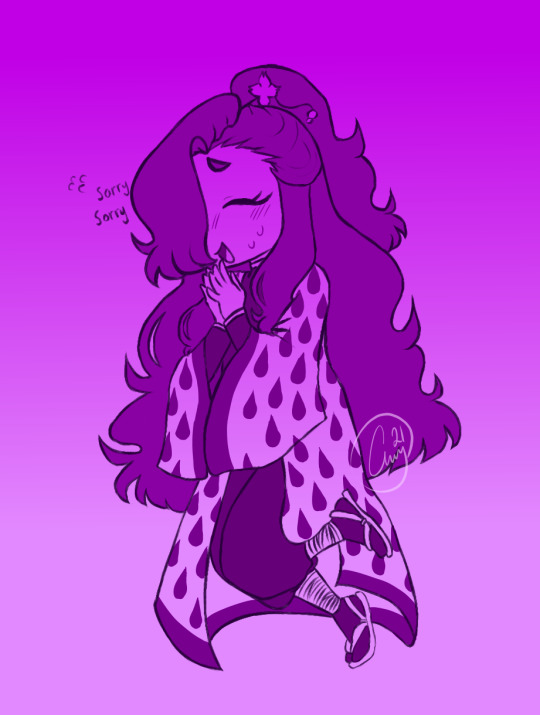
#{ ❥— odasaku sakunosuke }#{ ❥— atsushi nakajima }#{ ❥— chuuya nakahara }#{ ❥— jun’ichiro tanizaki }#{ ❥— ango sakaguchi }#{ ❥— ranpo edogawa }#{ ❥— kanoko okamoto }#{ ❥— emily dickinson }#{ ❥— haikyuu!! karasuno high school }#{ ❥— haikyuu!! nekoma high school }#{ ❥— haikyuu!! shiratorizawa academy }#{ ❥— haikyuu!! aoba johsai high school }#{ ❥— haikyuu!! fukurōdani academy }#{ ❥— haikyuu!! fly high }#{ ❥— tetsuro kuroo }#{ ❥— kenma kozume }#{ ❥— koushi sugawara }#{ ❥— kōtarō bokuto }#{ ❥— tooru oikawa }#{ ❥— osamu miya }#{ ❥— yui miyazaki }#{ ❥— hayami kobayashi }#{ ❥— hetalia: draw a circle that’s the earth }#{ ❥— ludwig beilschmidt }#{ ❥— ivan braginski }#{ ❥— antonio carriedo }#{ ❥— coria kirkland }#{ ❥— jujutsu kaisen: kyoto prefectural jujutsu high school }#{ ❥— nobara kugisaki }#{ ❥— yuuji itadori }
2 notes
·
View notes
Text

Considerando que tres de las casas en las que he vivido —de todas a las que me he mudado en barrios del oeste y sur de Tokio como Shiba y Akasaka— tenían portales cubiertos de hiedra, es obvio que tengo afinidad con ellos.
Una vez que me he acostumbrado al exuberante crecimiento de la enredadera, cómo se crencha en lo alto y cae netamente por delante y por detrás como el cabello recién lavado de una joven, cubriendo completamente el portal hasta el pestillo, solamente mirarla me trasmite una sensación fresca, de lozanía. Pero en otros momentos, cuando voy a salir con mi familia y alguien se retrasa vistiéndose, por ejemplo, y yo me he adelantado y estoy harta de esperar en las piedras de la entrada, desahogo mi frustración fustigando las hojas.
Así que no tengo más remedio que reflexionar sobre este azar de la hiedra en mis portales. Además, si fuéramos una familia siempre de trajín, saliendo y entrando continuamente, sacudiendo y cerrando de un golpe la puerta, la hiedra no prosperaría, aunque la hubiera. Si nuestra familia no se complaciera particularmente en dejar a la naturaleza a su aire, no toleraríamos una hiedra tan viciosa. Es más que probable entonces que haya otros factores ligados a la familia en esto de los portales con hiedra, además de la casualidad. Puede resultar ramplona esta explicación mía, pero los de la casa demuestran amar de verdad la modesta hiedra, sean o no conscientes, dejando la puerta principal condenada, poco más que como espaldera de la hiedra, y molestándose en entrar y salir por el portillo lateral como si fueran intrusos. Quizás, a juzgar por los resultados, cada vez que tenemos que mudarnos acordamos tácitamente entre nosotros buscar una casa con hiedra en el portal. Si lo pienso, cuando vivimos en una casa sin hiedra hay una sensación desolada, inhóspita, al entrar y salir, como el reflejo de la luz eléctrica en la visera de un empleado dándote en los ojos. El caso es que nunca permanecemos mucho tiempo en esas casas.
En pleno verano la fronda apretada de la hiedra puede incluso equipararse a un muro verde, con sus hojas imbricadas como escamas de pez, enterrando la puerta. Desde otoño hasta comienzos de invierno la hiedra se torna de un bello color dorado rojizo, como si hubiera endosado varias capas de bálago para guardarse de la lluvia. Cada mañana de helada se multiplican las hojas amarillentas y ajadas, que caen y se esparcen aunque no sople viento. Ya en invierno solo quedan los tallos y zarcillos, intrincada y tenazmente entrelazados, que vuelven a su arabesco original si los desenredas. Como la osamenta o el sistema nervioso de un reptil prehistórico que se hubiera secado y endurecido en fósil leñoso, emitiendo en los nudos unos cerdosos palpos como tentáculos. Me dan grima, pero si los miras desde otro punto de vista son como los elaborados florones de la rejería renacentista.
En el tiempo en que todo retoña contemplar la hiedra resulta vigorizador y placentero. Las hojas tiernas y traslúcidas caen en cascada desde lo alto del portal como una arroyada tras la lluvia. Las yemas y tallos nuevos en la punta de los viejos —del color del bambú— proyectan su pálido verde cada uno por su camino, ocupando los espacios libres en los tablones del portal. Hay una encantadora libertad juvenil en la desordenada energía con la que crecen y se alargan.
Obviamente el terreno de nuestra casa en Shiba Shirogane era óptimo para este tipo de trepadora. A lo largo de todos sus tallos las innumerables hojas nuevas y henchidas, enroscándose entre sí, arracimándose en manojos que competían en largura, pululaban por todo el portal.
«Son como los flecos de los chales de lana que llevábamos antiguamente.» Incluso nuestra vieja criada Maki —que no se interesaba en la naturaleza, las plantas o los árboles— estaba impresionada por la belleza de la hiedra. Era una mañana despejada de principios de verano que guardaba todavía algo de la fresca madurez de la primavera tardía. Haciendo visera con la mano, Maki levantó la vista al portal cubierto de hiedra: «Hay días en que los tallos crecen tres o cuatro dedos. Cuando están así son una hermosura».
Era como si la malhumorada Maki, al ser capaz de calcular a ojo el crecimiento de los tallos, hubiera descubierto por primera vez su amor por la naturaleza. Aunque era una persona honesta, Maki era obstinada hasta la intransigencia. Por esta razón sus dos matrimonios habían acabado en divorcio. Mujer de avanzada edad, obligada a servir en casa de extraños durante años, con un duro cascarón de ego, se había sentido conmovida al menos en parte por esos tallos. Me alegré. Maki había llegado a sentir, en el umbral de su conciencia, la dureza de su suerte: sin hijos, pasados los cincuenta y peleada con todos sus parientes. ¿No se habría manifestado hasta cierto punto, en este asunto de la hiedra, el natural desarrollo de sus emociones y la necesidad de hallar algo que amar? Sintiendo la tristeza de sus circunstancias la examiné con mayor atención. Su cuerpo era ya casi el de una anciana. Vista de perfil, se le marcaban en torno a la mandíbula dos o tres surcos verticales, color tabaco.
«Cuida de ella, aunque sólo sea hiedra. Te reconfortará.» «Sí», respondió Maki embebida. Parecía estar viendo ya la hiedra de modo muy distinto.
Okamoto Kanoko
3 notes
·
View notes
Link
Esta novela es el ejemplo de joya literaria que no llega a las 60 páginas. Recomendadísima.
#literatura#literatura japonesa#autora#feminismo#okamoto#kanoko okamoto#poesía#escritoras#literatura feminista
18 notes
·
View notes
Photo
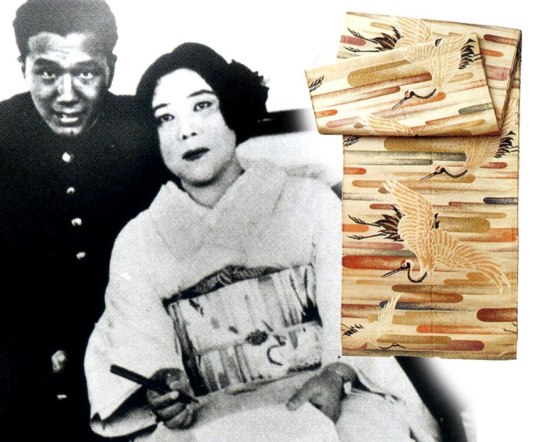
Crane round belt. In his essay "Kimono Reminiscences", this round belt is mentioned as a kimono worn when traveling abroad. [Kimono of Kanoko ~ Early Showa 1930s] — With Kanoko Okamoto and Taro Okamoto.
19 notes
·
View notes
Text
"
Eskilerin ölmesine izin verecek cesaretin yoksa, yeni şeyler yaratmanın büyük sorumluluğunun üstesinden gelemezsin.
Kanoko Okamoto, Japon Balığı Kargaşası
6 notes
·
View notes
Text
I just bought 4 books by Japanese authors and I have zero regrets. I am very excited to read the first Polish translation of Ango Sakaguchi, unfortunately this was a pre-order and the book is coming out around autumn. Well, now we just wait. I got:
“神様” (Kami sama) by Hiromi Kawakami (there is no English translation of this book, I bought it in Polish translation that was published last year)
“A Riot of Goldfish” by Kanoko Okamoto
“Lemon” by Motojirō Kajii
"In the Forest, Under Cherries in Full Bloom" by Ango Sakaguchi
#we have some pretty amazing publishing house that does those translations of lesser known Japanese authors#lesser known to foreign readers that is#they are pretty well known and respected authors in Japan
9 notes
·
View notes
Text
Want a confusing backstory of my BSD oc? No? Here it is anyways!
Kanoko Okamoto/ Haruko Enomoto
The two were best of friends, like sisters even. Kanoko was adventurous and ambitious and Haruko loved that about her. Haruko was quieter and gentler. The topic that often drove them apart was Kanoko’s identity as an ability user “Lively Ebb and flow” which allowed her to manipulate memories. Haruko thought this ability was astounding but Kanoko found it disturbing and annoying. Despite this they did everything together. It was the summer just before they would be going to college that it happened. On the way home after a night out they got into a car crash. Haruko was scratched up a bit but Kanoko was gravely injured. Managing to reach up to Haruko and touch her one last time, she used her ability to transfer all of her memories to Haruko and then passed on.
Days later Haruko woke up in the hospital. At first she couldn’t remember anything then she began to recall “her” name. Kanoko.
It was by some unknown part of her ability that Kanoko transferred both her memories and her ability to Haruko who know believed she was Kanoko. This anomaly had also spread to Kanokos family, who also believed Haruko was Kanoko. Now identifying as Kanoko, she resumed her life. Ever so often visiting the grave of her friend who had not survived the accident “Haruko Enomoto”
Until she met the armed detective agency. It was purely coincidence that she ran into the duo that was Dazai Osamu and Kunikida Doppo.
After exchanging some friendly and some odd remarks, the latter mostly from dazai, Kunikida couldn’t get her off his mind. But dazai warned him that she was not who she seemed. Despite his warning Kunikida continued to grow his friendship with “Kanoko” until one evening Dazai confronted her.
“You are not who you seem, Haruko Enomoto”
In “kanoko’s” head it made no sense, she had all the memories of her life, including the dear memories of her and her friend Haruko, but that was her friend, not her. And beyond that she was dead!
But at his remark her memory began to get fuzzier, until Dazai used “no longer human” to break the ability’s hold over “Kanoko” whose memory had now reverted back to Haruko’s...
1 note
·
View note
Text
Taiwanese films advance into India with exciting exposure

Taiwanese films are about to be officially streamed on the Indian over-the-top (OTT) platform, sharing Taiwanese cultural custom with Indian audiences in the post-epidemic era. For the first time, the Ministry of Culture leveraged an OTT platform to broadcast high-quality Taiwanese films in India, encouraging Indian audiences to learn about Taiwan through films and increase their interest in Taiwan.
The Deputy Minister, Lee Ching-Hwi, the Ministry of Culture mention in her speech that when she served at National Palace Museum, she had held an exhibition “India Month” with India-Taipei Association to display the Museum Collections of India Cultural Relics. We also invited India Performance Team in Taiwan through India-Taipei Association to make Taiwanese people realize more about this country filled with mystery and culture through mutual cooperation.
Lee states that hopefully this cooperation between Taiwan and India can help local people to know about Taiwan through movies produced by the enormous Indian film and television industrial energy. “Movies integrate our cultural background, music and images which are the best media to see every impression of Taiwan.” It’s the first time for the Ministry of Culture to use Indian local OTT to drive marketing campaign of our movies. We hope to release Taiwanese movies and even the entire Taiwanese culture due to the feature of easy accessibility of the platform.
https://www.youtube.com/watch?v=otNOUlV7h8k
The Deputy Representative of Taipei Economic and Cultural Center in India, Mu-Min Chen indicates through video, “I am stationed in India, so I can deeply realize the penetration rate of online movie watching. It is estimated that there are over 80000000 OTT using population. Thanks to the enforcement of Legislator Kuan Bi-ling in the first place, the Ministry of Culture promotes Taiwanese movies in Indian area this time. We are looking forward to seeing more Taiwanese movies produced into India.
Indian internet celebrity Taindian DJ also joins the press video conference. He visited Taiwan in 2014 before. He finds out that Neither Taiwan nor India knows each other well about culture and history. Therefore he creates channel to produce movies to share the beauty of these two countries. He is pleased to encourage Indian people never lose this golden opportunity to enjoy Taiwanese movies.
The Indian internet celebrity Aakash Malhotra visited Taiwan in 2019. He was invited to stay overnight at the Office of the President at that time. He says through overseas call that he is deeply impressed on Taiwan. Favorably loving Taiwan, he is so honored to have the opportunity to promote Taiwanese movies in India.

From March 1st to May 31st of this year (2022), on the Indian OTT platform MXPlayer, free access to movies, including "Beyond Beauty-Taiwan from Above" overlooking the land of Taiwan with aerial photography; "My Missing Valentine", a romantic fantasy with laughter and tears; "Long Time No Sea", a film of aboriginal culture and island culture; "Love Talk" a film of cross-country pursuit of love; and "The Silent Forest", an adaptation of a real-life societal incident. The sharing and cooperation between Taiwan and India will increase the understanding and connection between Taiwan and India.
Five well-known films will be broadcasted this time. Awarded five Golden Horse Awards, "My Missing Valentine" used the logic of time travel to compose a magical love story that the lover will disappear on Valentine's Day. "Love Talk", adapted from the short story of the legendary Japanese female writer Kanoko Okamoto, is a love story shot across Japan, Taiwan, and Malaysia. For this film, Director Kuo Chen-Ti received the "Best Director Award" and "Best Concept Award" at the 2021 Roshani International Film Festival in India. "Long Time No Sea", which took 6 years of production, presents the land and people of the Lanyu island, and tells a simple but moving story of Taiwanese indigenous people. "The Silent Forest" is inspired by a real-life school scandal in Taiwan to explore in-depth the multiple helpless situations in life. At the 2021 International Film Festival of India, for this film, Director Ko Chen-Nien won the "Best Director Silver Peacock Award" and Troy Liu won the "Best Director". Best Actor Silver Peacock Award". "Beyond Beauty: Taiwan from Above", which won the 2013 Golden Horse Award for Best Documentary, was directed by the deceased aerial photographer Chi Po-Lin. After 400 hours of flight, through the camera on the helicopter, the film overlooks the beauty and nature of Taiwanese landscapes and shows the changes of landscapes due to people’s selfish destruction, which evokes reflections on homeland and nature conservation.
Regarding academic exchanges with India and the promotion of Chinese language learning, the Center for India Studies at the National Tsing Hua University has also joined us by using the resources of the Taiwan Education Center in India to assist in the promotion of cooperative academic institutions in India and to bring Taiwanese films to Indian higher education institutions.
0 notes